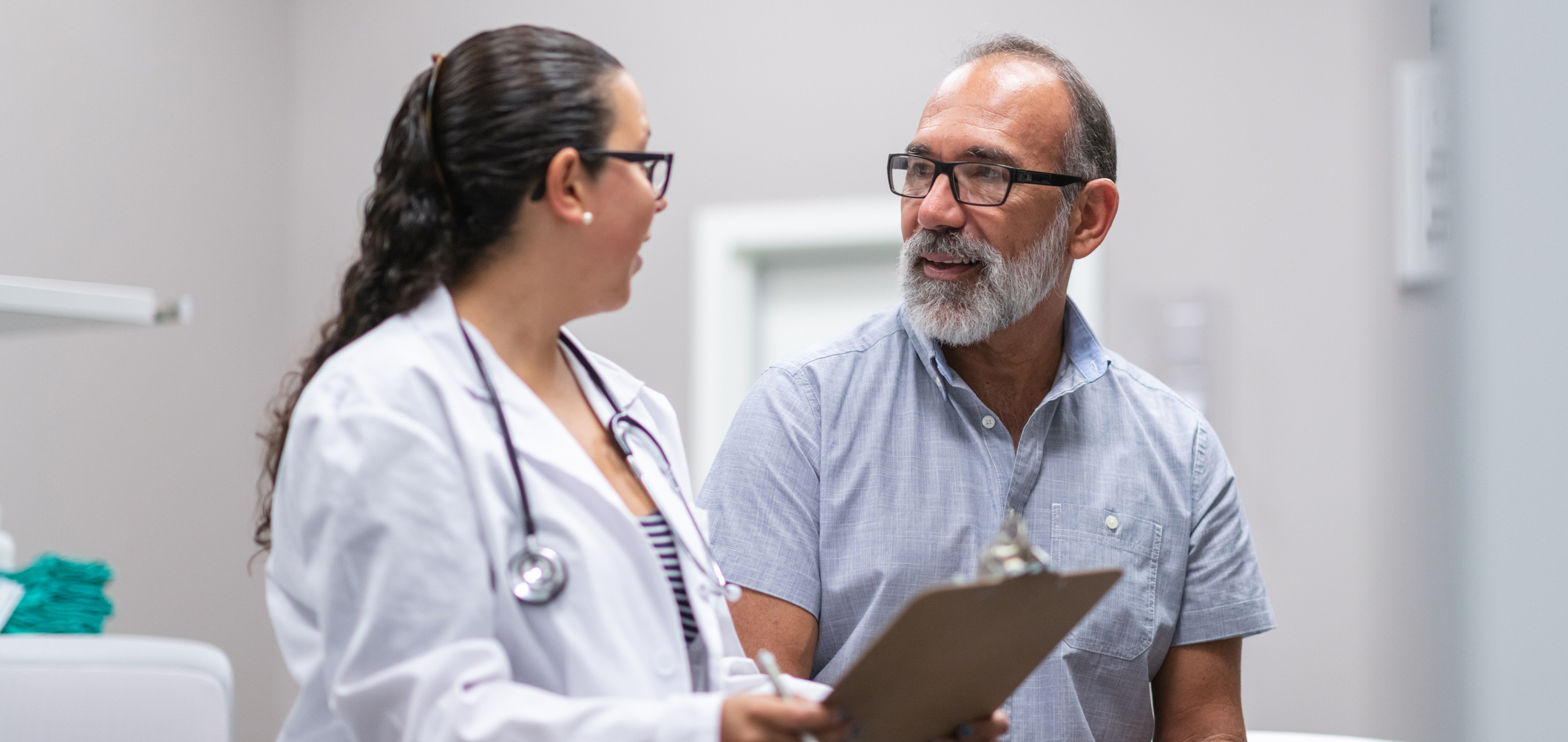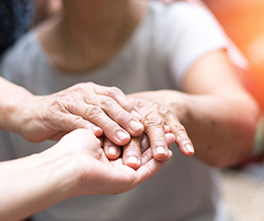Over the course of her career as a neurologist, movement disorders specialist Dr. Maria L. Moro-de-Casillas has witnessed the health inequities in the Hispanic/Latinx community.
Working at Hartford Healthcare’s Chase Family Movement Disorders Center, which has offices across the state, she realized that due to language, socioeconomic and cultural barriers, native Spanish-speaking patients did not have access to the state-of-the-art care that other patients receive.
She raised her concerns to Dr. J. Antonelle de Marcaida, Medical Director of Hartford HealthCare’s Chase Family Movement Disorders Center, and Maria Shimer, Director of Hartford HealthCare’s Ayer Neuroscience Institute’s speciality programs.
“Health inequity is a reality,” said de Marcaida. “We have a moral obligation to recognize and address health inequity towards our historically underserved and marginalized communities with the same passion and strength as we have shown in bringing the highest standards and innovations in care to all our patients.”
Shimer said that, anecdotally, it did appear that Hispanic and Latinx patients were underrepresented at the Chase Center. Working with Hartford HealthCare’s Vice President of Health Equity Sarah Lewis’ team, they set out to gather data both nationally and within the Hartford HealthCare system to better understand health inequity in this patient population.
They learned that the occurrence of Parkinson’s is more prevalent in Hispanics than other ethnic populations. “That told us right away that this was important,” Shimer said. “We should have been seeing more Hispanic/Latinx patients than we were.”
The next step was to find the barriers this population was facing, Shimer said. “We found that the number one barrier was language, the second was cultural, and the third was transportation. None of our existing centers had a fully integrated Spanish-speaking staff, and none are in urban centers, so public transportation was pretty much nonexistent.”
Moving forward to meet the need
“We knew this would be a great opportunity to launch a pilot program within the Ayer Neuroscience Institutite. We looked at Bridgeport and Hartford, and after talking to the team at the Brownstone Clinic, we knew we should run the program there,” Shimer said. “The staff in Brownstone is so fantastic, they are fully staffed with native Spanish speakers, the location in Hartford is ideal, and it is a known entity in the community. The staff had the skill sets, and the enthusiasm for what we wanted to do.”
The Brownstone Building, located on Retreat Avenue in downtown Hartford, has been providing community primary and specialty health services since 1969. Providers there see more than 40,000 patients every year for medical care, and more than 17,000 for dental care.
In October 2020, Moro-de-Casillas opened the Spanish-language movement disorders center in the Brownstone. She sees patients at this location the first Wednesday of every month. Since opening, more than 100 patients have been seen for Parkinson’s disease, Huntington’s disease, Essential tremor, among other conditions.
“It has been a fabulous collaboration with Brownstone,” said Moro-de-Casillas. A native of Mexico, she currently practices at the Chase Family Movement Disorders Center in Mystic, in addition to the monthly Hartford clinic.
For Moro-de-Casillas, “It’s not just overcoming the language barrier. It’s embracing the patient in a cultural environment where they are comfortable. It’s being in a place where the patient and provider understand each other.”
The monthly Spanish-language clinic is the only one of its kind in New England, and there are only a handful across the country, Moro-de-Casillas said.
It has been eye-opening for her as a physician as well, she noted. “On our first day in Hartford, we had a patient who was new to us, who had been under the care of another neurologist. This patient had a Parkinson’s diagnosis for several years, and had never been informed about deep brain stimulation, a well-established treatment modality for patients with Parkinson’s disease and Essential tremor.
“With the new treatments available, it takes a lot of conversation and a lot of questions and answers between the doctor and the patient,” Moro-de-Casillas said. “When you can do it all in Spanish, understanding not only the language but also the culture, it is easier for the patient and the family to understand and make an informed decision.”
Another patient with advanced Parkinson’s for about 15 years, who was homebound, was evaluated at the clinic. After adjusting her medications, she required more advanced treatment modalities to control her symptoms. She underwent succesful deep brain stimulation at Hartford Hospital. This patient now attends weekly church services and was recently able to travel back to her home country to see family she hadn’t seen in years.
“It has been really gratifying so far but it is also heartbreaking to know there are still many patients out there not getting the proper care,” Moro-de-Casillas said.
‘The Lord sent her to me’
At the March clinic, Moro-de-Casillas met in the morning with 70-year-old Carmen Lopez Guzman, and her daughter Dorymar Perez. Guzman, after discussing different treatment choices and understanding the options she had, chose to undergo botulin toxin injections to help control her tremor.
“Did it help?” Moro-de-Casillas asked. “Yes,” Guzman replies. “It is a lot better.” During the office visit, she reviewed her medical charts, and Moro-de-Casillas questions why she is taking iron supplements that are causing some digestive issues. “I will talk with your primary care to get it straightened out,” Moro-de-Casillas tells her. She will also reach out to her pulmonologist to get an update, and she orders some blood tests.
“She understands me very well,” Guzman said of the doctor. “I can communicate with her, instead of having to have my daughter translate everything for me.” During the visit, Moro-de-Casillas compliments a necklace Guzman is wearing. Guzman explains it had belonged to her mother, and was passed down in the family.
After lunch, Moro-de-Casillas sees Luis Muniz, a 73-year-old from Hartford. Doctor and patient have an easy rapport, and Moro-de-Casillas runs through a list of questions ranging from cholesterol levels to how he is sleeping and eating. “Do you feel depressed?” she asks him. “Sometimes,” he says, “since my wife died. Sometimes I am sad and I cry.” “I’m going to call your daughter,” Moro-de-Casillas says to him. “And if you feel depressed I want you to call me right away.”
Muniz said he appreciates how Moro-de-Casillas talks with him about issues outside of his neurological condition.
“I think the Lord sent her to me,” he said. “She’s dealing with my movements, but she is so helpful and kind. She deals with my other problems as well. She had me tested for my memory. I understand her totally, and I needed someone like that.”
With the patient roster growing, the hope is to expand the clinic to more than one day a month, Shimer said. The fact that it was less than a year from concept to reality makes this project “a best practice example of what we can do. It was not without its hurdles but it really resonated with people and we were able to make our case with data and facts. This is really revolutionary. Dr. Moro-de-Casillas is so passionate, she made everyone feel invested. I wish all my projects went like this.”
For Moro-de-Casillas, “this is a way for me to give back to my Hispanic community. I love all my patients and being able to bring the best care practices and state of the art treatment to my community is very gratifying. We still have a long way to go but we are closer.”



